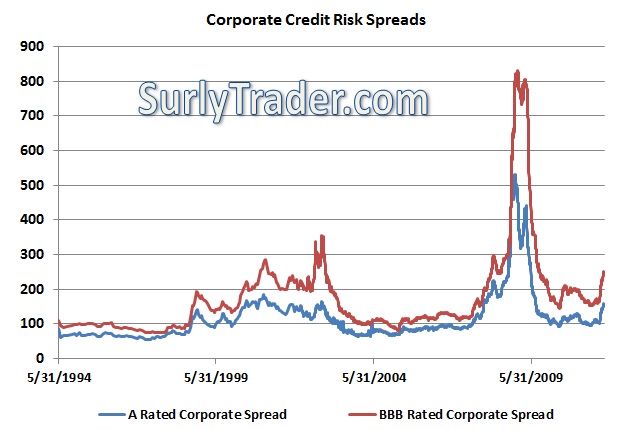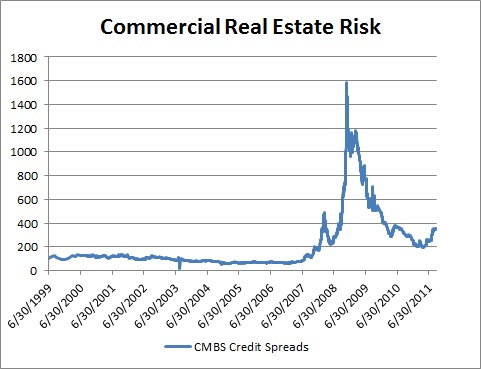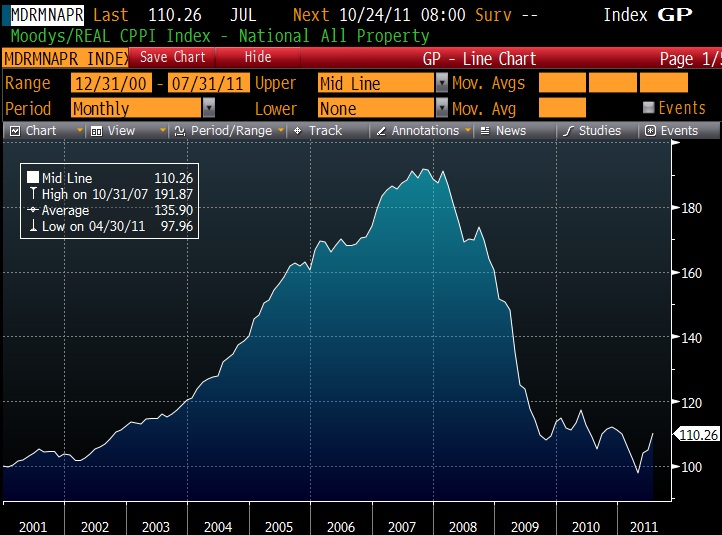By Surly Trader
There are very few widely available data
points for most investors to track corporate credit spreads. The corporate
credit spread is the difference between the interest rate that a company has to
pay and the US Government has to pay on their treasury bonds to borrow money. A
company that issues debt at a spread of 250 bps over the 10 year treasury will
have to pay 2.5% plus the current yield on the 10 year treasury. The credit
spread represents the perceived riskiness of the company, its probability of
default and ability to pay its debts.
In 2008, the credit risk of corporations
blew out to record levels. If we just look at A rated and BBB rated US
corporations, the tail event of 2008 stands out starkly:

Credit spreads
have widened, but not past expected levels of fear
The markets of 2008 showed us what happens
when the financial markets freeze up. Loans and bonds are the lifeblood of the
economy and when no one is willing to lend or will only lend at extremely high
levels of interest rates then we question the solvency of such companies as
General Electric. To date in 2011, the credit markets have not frozen. In
fact, with the 10 year treasury at 1.75%, even with a 250 bps spread, companies
are able to borrow money at very attractive levels of interest. Even at a
spread of 300 bps a company will pay less than 5% pretax on that debt. Why can
they borrow at such low rates? Because corporate balance sheets are
in terrific shape.
What really stands out is the CMBS market.
CMBS (Commercial Mortgage Backed Securities) represents pooled commercial loan
assets. In 2008, this market absolutely imploded. Instead of gapping out from
60 bps to 600 bps, this market gapped out to nearly 1600 bps or 16% over
treasuries. If we look at the current risk flare we see a 350 spread that
actually seems stable at this level:

CMBS spreads
lack their past flare
What is different
about this market? Mostly it has just absorbed the losses. Commercial real
estate has already fallen in price and appear to have bottomed out and might be
at fair value. Therefore the loss expectations today are nowhere near what they
were in 2007/2008:

Commercial
Property Prices bottomed and recovering?
This same argument applies to the
residential real estate market and the impact on bank balance sheets.
Are things rosy? No. Are things as bad as
2008? Not right now. If we do enter into a recession it seems improbable that
we could see the depths of this last crisis.
No comments:
Post a Comment